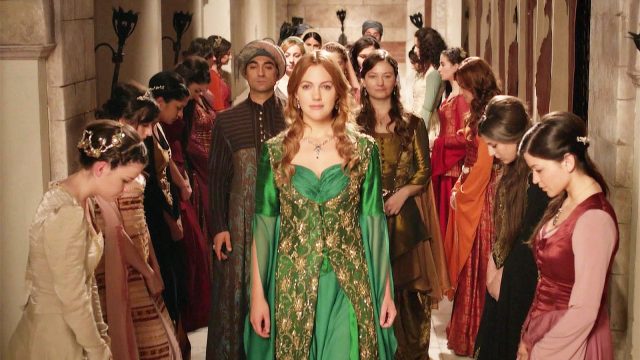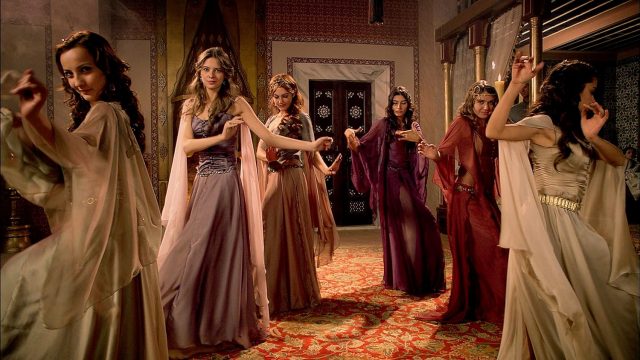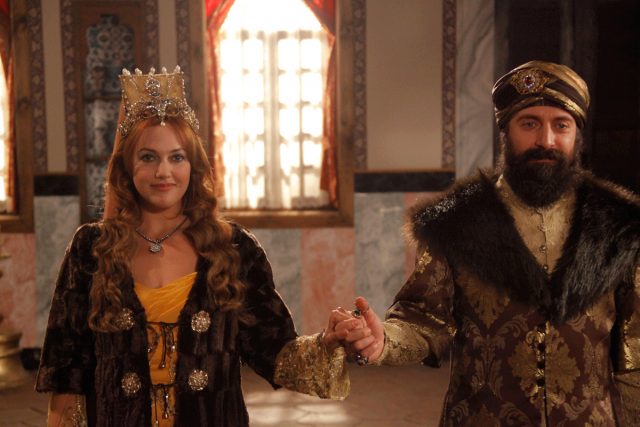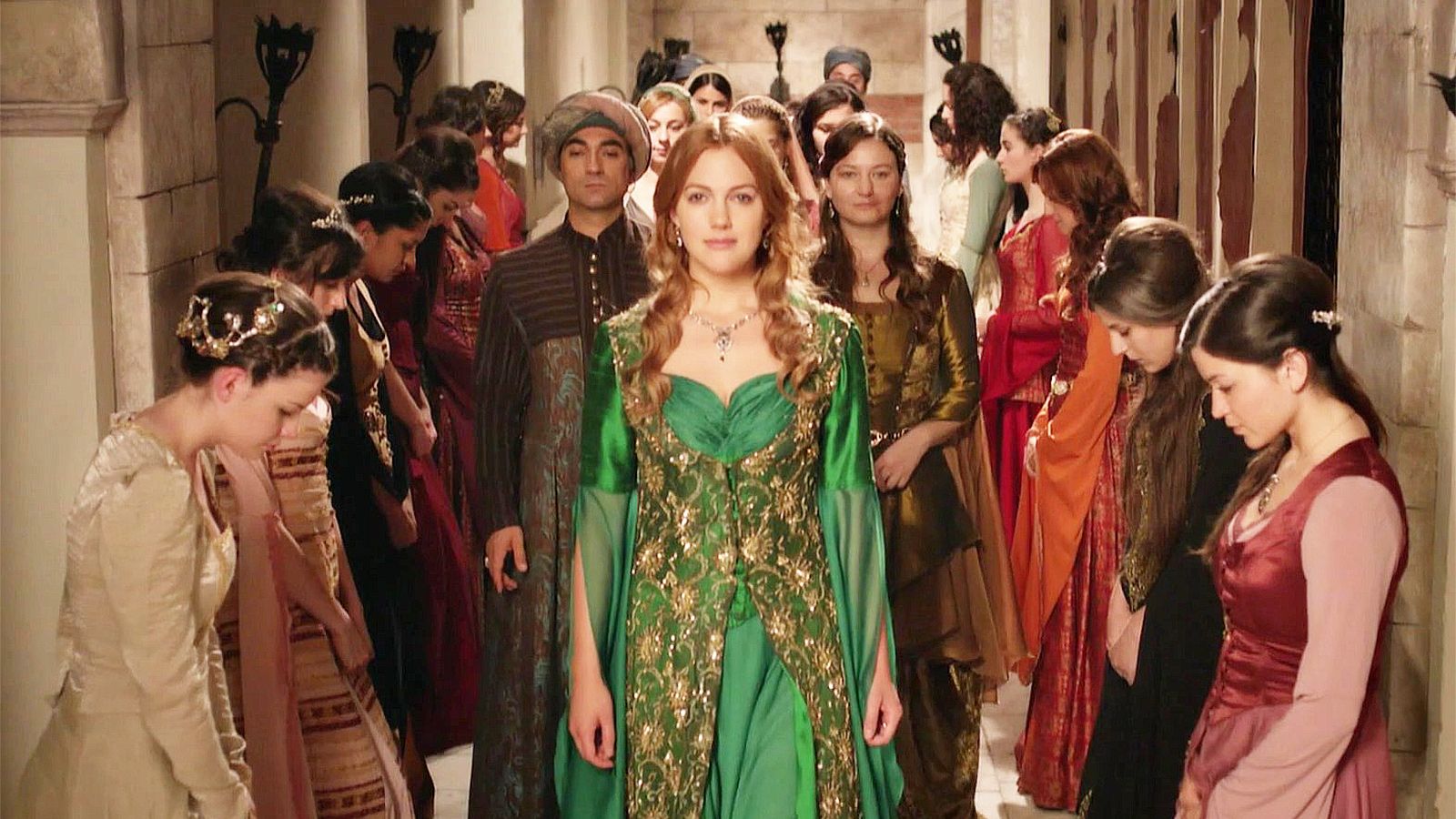Millions of viewers are worried about the relationship between Hürrem Sultan and Suleiman the Magnificent. People knew how to love! This is exactly the impression left after watching the series “Magnificent Century”. So, was life in the harem really like an eastern tale? We explain how the concubines actually prepared for the night with the sultan.
The private life of the Ottoman ruler was important to his subjects. Despite the rigidity of the Muslim religion, the sultan was seen as “Allah’s shadow on earth”, so he had to conform to general ideas about male potency and fertility, which meant having a large number of women.
As the number of concubines from noble families increased, the ruler showed more respect to the courtiers. Therefore, surprisingly, no one particularly expected the sultan to have a wife. Moreover, in the 15th century, his legal wife had equal authority with him. The Sultan himself did not need the latter, but history knows cases when a slave in the harem rose to the top.
How to enter the Sultan’s harem?

Translated from Arabic, the word “harem” meant “protected, sacred area”. About 200 concubines lived here, among whom was the mother of the ruler, Valide Sultan. They were guarded by eunuchs, dwarves, deaf-mutes and those who, according to the Ottomans, had some kind of shortcomings and therefore did not pose a threat to power.
It was not that easy to enter the harem: Generally, daughters of noble families and mature concubines chosen according to the sultan’s taste were brought here. Moreover, in 90% of cases, preference was given to brunettes, the rest were brown-haired and blondes. But redheads were taboo: in the Middle Ages, they were believed to be associated with demonic forces. Height and full chest were not as important as waist-to-hip ratio (about 60/90). Having a belly to belly dance is a myth. A thin, flat stomach was considered beautiful. This choice was important for children to be born healthy and beautiful.
Let’s stipulate that maintaining a harem is an expensive pleasure, greatly ruining the treasury. Think about it: the Sultan had to give a gift to every free noble girl, even if he had never met her. There was a whole program for this. If the ruler suddenly wanted to save on a gift, the inhabitants of the harem raised a real riot. The situation was simpler with the slaves because noble families could not intercede for them. Each girl had her own salary, depending on her position in the harem hierarchy. They spent their personal money on clothes, the construction of baths, mosques and charity work.
How to Attract the Sultan’s Attention?

Since there were many more inhabitants in the harem than the Sultan could physically satisfy, many slaves and free girls might never see their masters. If after nine years the girl could not get into the sultan’s bed, a large dowry was paid to her and a noble groom was chosen, and this was not considered shameful for her. The reputation of the “unclaimed” girl was also not considered spoiled, on the contrary: after all, she passed through an exemplary school of education. Those who caught the attention of the ruler received many advantages.
However, this required training. Turkish language to the concubines, reading the Quran, poetry, music, dancing, good manners, personal care, make-up, the art of conversation, offering coffee and sweets to the guests, filling a pipe and of course making love. However, after the exam, the girl was included in the sultan’s program. At the same time, he had to get the approval of the Valide Sultan. Otherwise, the slave may never be presented to the ruler.
How they prepared for the night with the Sultan

Generally, the harem beauty was chosen by Valide Sultan for the sultan, but there were also exceptions where she herself came. Often, he examined applicants while swimming and dancing. He gave his favorite a handkerchief as a sign to appear in his room. But sex didn’t necessarily have to happen on the same night.
A special gift was sent to the chosen person and then preparations were made. The girl’s body had to be clean: dirt and hair were removed from the skin. Even bruises were deemed unacceptable. The same was true of custom: the meeting was postponed or canceled altogether. The concubine also had to undergo a compulsory medical examination to ensure her chastity.
Unlike what was shown in The Magnificent Century, the clothing of the harem inhabitants was not revealing. During the meeting, the concubine was supposed to be ashamed, emphasizing her innocence. The Sultan started a pleasant conversation with her, making compliments, followed by hugs, kisses, and then sexual intercourse. At the same time, it was not customary either to undress completely or to look at each other’s genitals. Everything was done randomly but they both maintained eye contact.
Meanwhile, the sultan himself, like his future heir, was taught the science of love according to Greek and Arabic texts, if not according to the Kama Sutra. Contrary to speculation in Europe, group and anal sex were strictly prohibited. Sharing women with other men is also unacceptable. At the same time, oral sex was also considered acceptable. After the intercourse, the Sultan made compliments and offered them sweets, which, by the way, were not offered to girls on ordinary days. They took baklava, Turkish delight, halva and nougat only from the hands of the ruler (as a rule, they ate dried fruits for desserts). Then he said goodbye to his chosen one. They also fell asleep separately. In the morning the favorite received a gift from the ruler.
What did the Sultan’s favorite concubine get?

As seen in Magnificent Century, the road leading to the sultan’s chambers was indeed “golden”. The favorite who got into her bed at least once received the status of “where”. His salary was increased and a room was allocated to two concubines. Also, this place had a higher chance of seeing the ruler again. In case of pregnancy, she became iqbal and was able to meet the sultan privately more often, although not necessarily for amorous pleasures. Therefore, the worst thing for the Iqbals was to lose their child. In this case, they thought that he was in “bad health” and would not allow him to approach the sultan anymore. After a while, a groom was found for her, and at this point it was thought that her “career” in the palace was over.
If Iqbal gave birth to a girl, she would receive the status of “woman”. At the same time, the sultan’s daughters also had special privileges. For example, they were considered higher in status than their husbands, who could only enter their rooms with their permission followed by a greeting. They could also hang around with their unwanted spouses and marry someone else if they wanted. The husbands of the princesses had no right to take another wife. Remember the relationship between Princess Hatice (Süleyman’s sister) and İbrahim. Of course, in reality there was no love between them, but the creators of the “Magnificent Century” conveyed this principle correctly.
The highest status in the harem after Valide Sultan belonged to Kadyn Efendi, the girls who gave birth to the ruler’s sons. They were considered the legal wives of the sultan. True, in the 15th century it was not “fashionable” to marry them. Allegedly, this situation threatened the real power of the sultan. For this reason, when their sons reached the age of 11, they were often removed from the palace (at this age they were circumcised and then sent to rule a province). As it is known, this tradition was broken by Hürrem Sultan, who marked the beginning of the “Women’s Reign” period.
Compared to the series, life in the harem was not very colorful and romantic in general. The girls followed a strict diet, did regular physical exercises, and entertained each other with songs and dances. And of course, the beauties weaved intrigues and used all kinds of tricks to improve their situation.
Source: People Talk
Mary Crossley is an author at “The Fashion Vibes”. She is a seasoned journalist who is dedicated to delivering the latest news to her readers. With a keen sense of what’s important, Mary covers a wide range of topics, from politics to lifestyle and everything in between.





